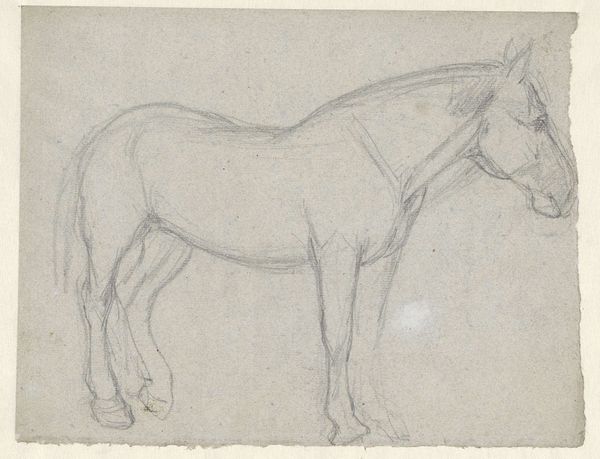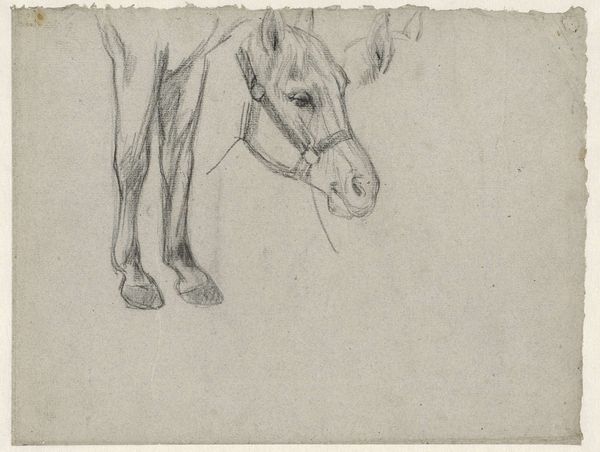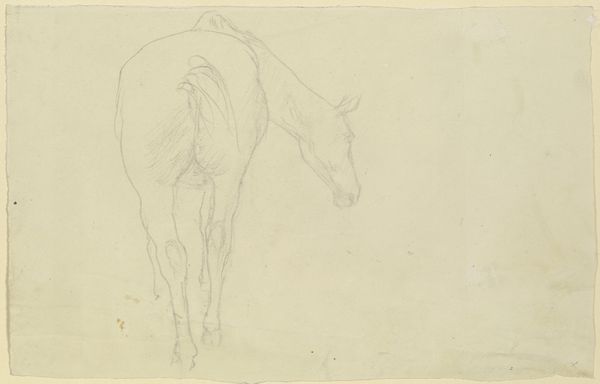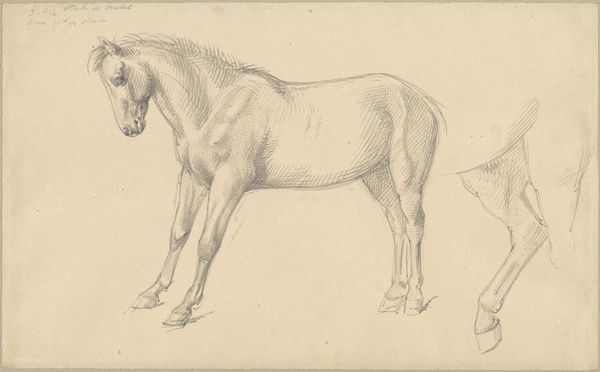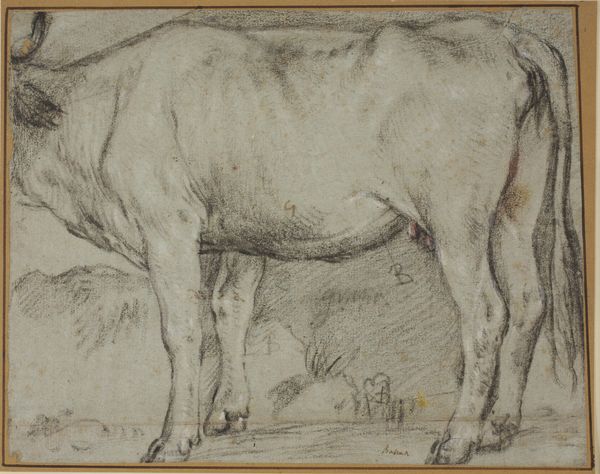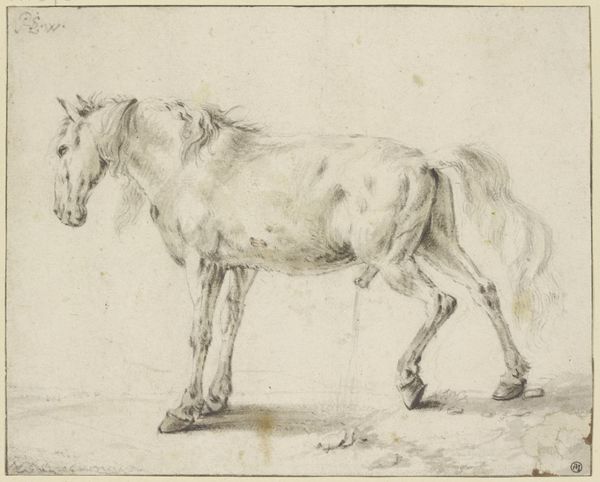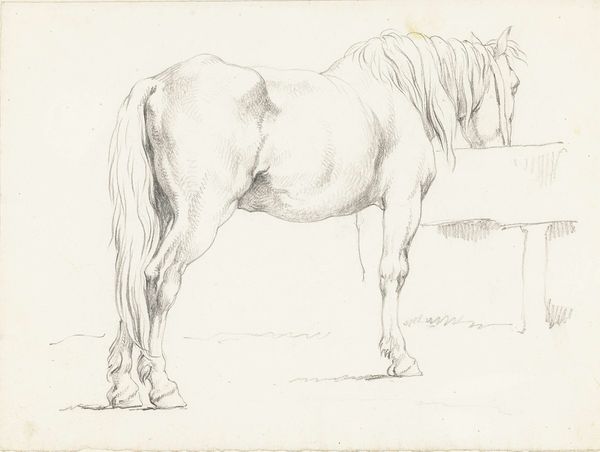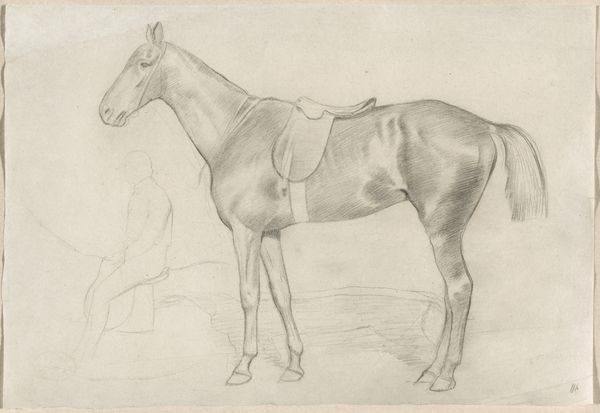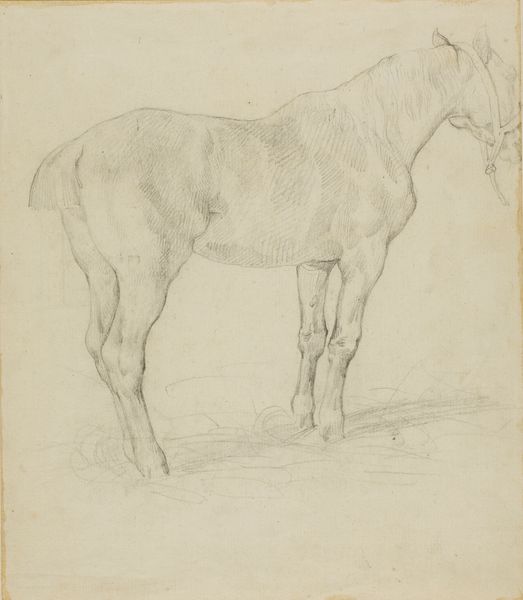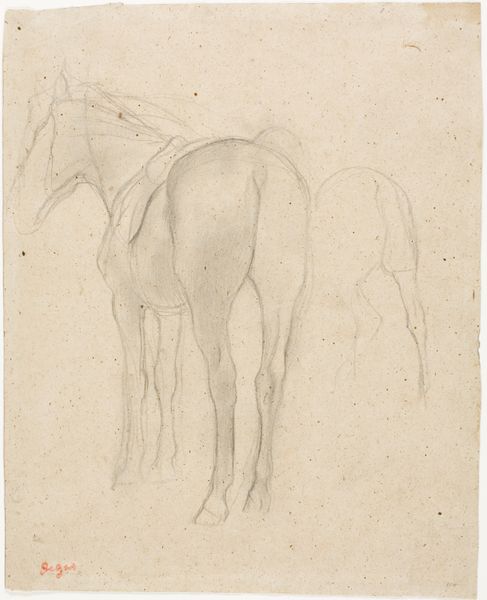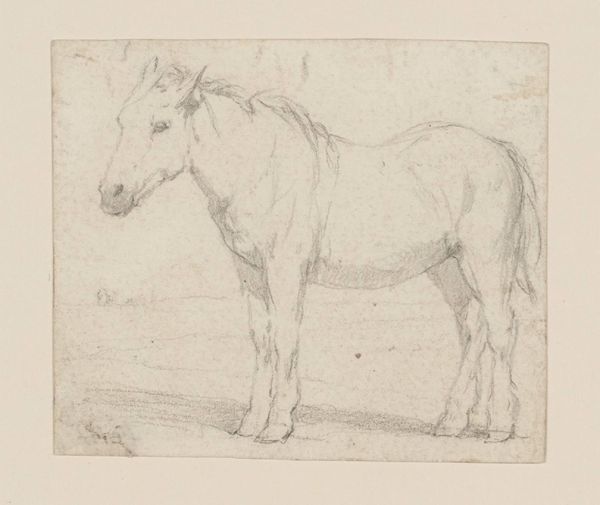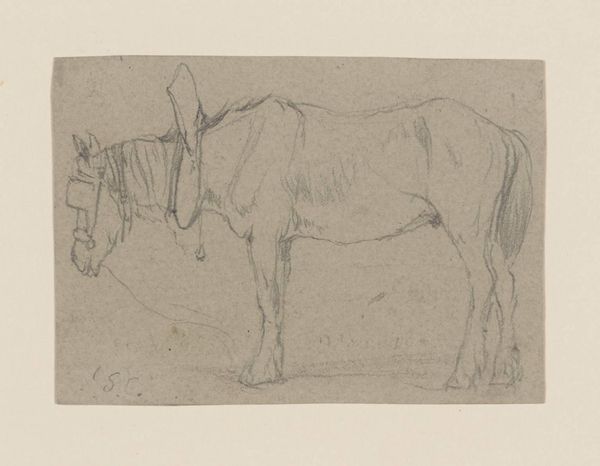
drawing, pencil
#
portrait
#
drawing
#
pencil sketch
#
landscape
#
figuration
#
pencil drawing
#
pencil
#
horse
Dimensions: height 236 mm, width 310 mm
Copyright: Rijks Museum: Open Domain
Curator: Observing Jan Kuyper's "Studies van een Paard," dating roughly from 1855 to 1912, I immediately get a sense of transience, like capturing a fleeting moment in pencil on paper. Editor: Fleeting, yes, but also revealing of the deeply ingrained relationship between humans and horses within a particular societal structure. Think about how crucial horses were for labor, transportation, even warfare during this era. This drawing, seemingly simple, speaks to a history of power and dependency. Curator: It feels almost ethereal to me. The unfinished quality of the lines hints at movement, a gentle dance frozen in time. You can almost feel the soft warmth of the horse just by looking at this piece. It’s really interesting what is not actually shown. Editor: The sketch's incompleteness mirrors the larger social dynamics at play, though. It begs the question of who owned or commissioned a study like this. Class divisions influenced the subjects people had the leisure to depict. Even seemingly neutral images like these are rarely detached from their historical circumstances. Curator: Maybe, but couldn’t it also be the artist simply trying to grasp the form? To just… feel the energy of the horse flow through his pencil? Not everything has to be related to socioeconomic factors. Can we, just for a moment, allow art to be intuitive? Editor: I understand the desire for intuition, but these are not mutually exclusive. Art IS always intuitive and born of impulse, but even spontaneous art arises in the face of social considerations. Consider gender too; being a male artist grants an automatic privilege of expression often denied to women of that era. We should ask whose stories and experiences are represented in collections like this. Curator: Ah, but the beauty lies, in a certain sense, beyond these limits that were defined for and against others, the very act of creation being an assertion of existence, if I might take it there. Anyway, look at how he subtly suggests weight and muscle, and manages to capture the stillness of the horse with such minimal effort, using delicate shading! It gives us an immediacy. It is absolutely divine! Editor: Divine yes, but this brings up other social and labor dimensions too! Where was the horse located, who attended it, who were these workers and where is their perspective here. I concede that it is quite good as far as capturing weight and texture! I believe it calls to reflect about who produces or consumes a cultural item, for to simply aestheticize an artwork such as this risks obscuring underlying injustices. Curator: Well, on that note, I feel like I’m understanding a little more deeply how you view art! Editor: As I understand your perspective, as well.
Comments
No comments
Be the first to comment and join the conversation on the ultimate creative platform.
